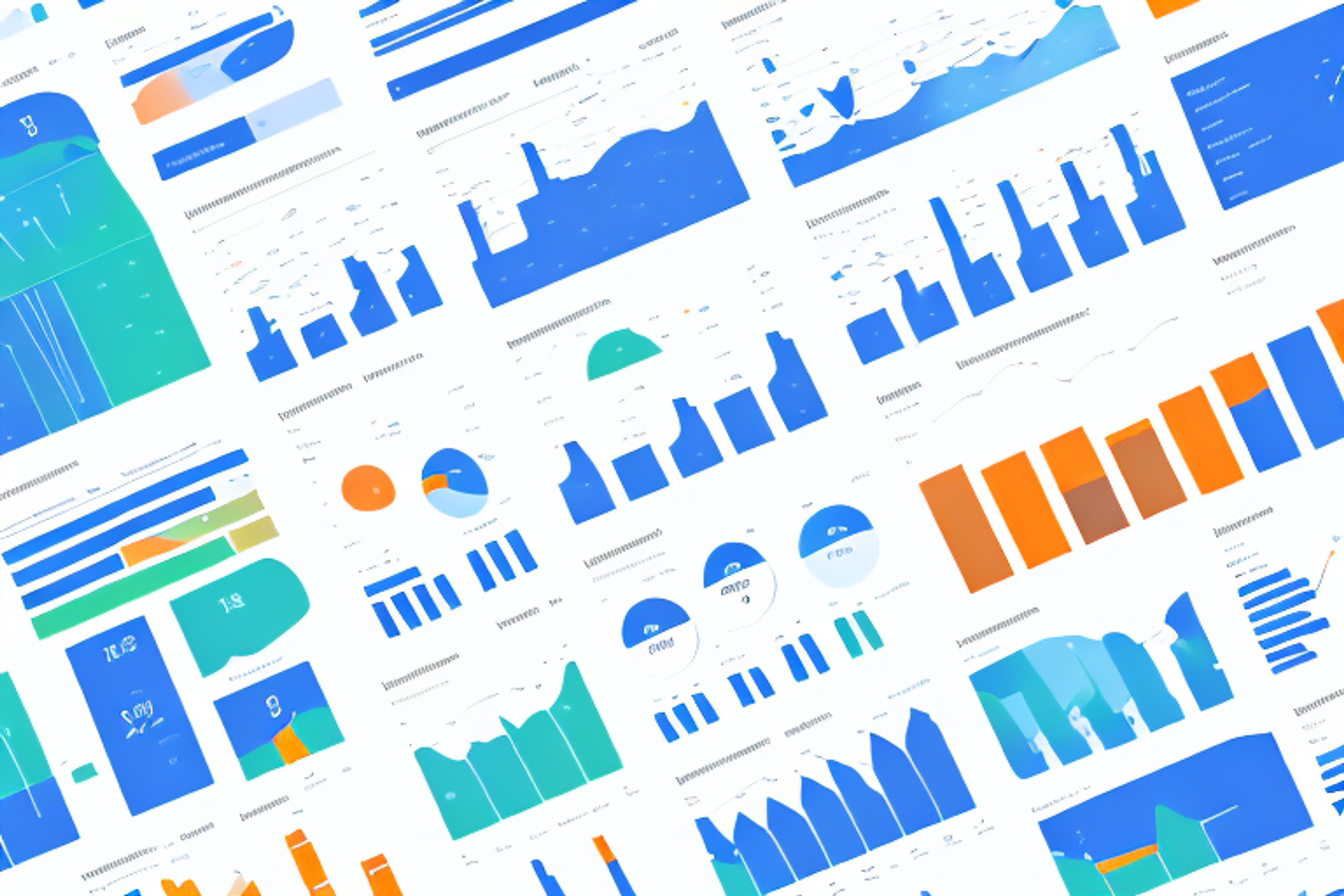5 Metrics to Measure the Success of Your Product
Discover the top 5 metrics to measure the success of your product and gain valuable insights into your customers' behavior.
Posted April 10, 2025

Table of Contents
Developing a successful product isn't just about conceptualizing and launching it. It's about measuring its performance and growth to ensure that it is flourishing over time. Measuring product success is a critical component of any business, and it can help organizations identify areas where they need to improve and optimize their offerings.
Why measuring product success is important
If you're invested in making your product successful, measuring its performance should be at the forefront of your priorities. Measuring performance can help uncover issues and opportunities that need to be addressed. By measuring your product success metrics, you can analyze customer behavior and identify areas for improvement. It can help highlight the capabilities that are helping your product perform well and those that need modifying.
Additionally, measuring product success can also help you make informed decisions about future investments and product development. By understanding what is working and what is not, you can allocate resources more effectively and make strategic decisions about where to focus your efforts. Measuring product success can also provide valuable insights into customer preferences and trends, which can inform future product design and marketing strategies.
Key performance indicators (KPIs) for product success
Key performance indicators or KPIs refer to specific metrics that a business can use to measure the success of its product. The most common KPIs include new customers, average revenue per customer, customer retention rates, and conversion rates. Each of these metrics provides vital data on your product's progress, and they are all worth considering to develop a more comprehensive understanding of your product's performance.
However, it's important to note that KPIs may vary depending on the type of product and industry. For example, a software company may focus on metrics such as user engagement, software uptime, and customer satisfaction, while a retail company may prioritize metrics such as inventory turnover and sales per square foot. It's crucial to identify the KPIs that are most relevant to your product and business goals to ensure that you are measuring the right metrics and making informed decisions.
Understanding customer satisfaction metrics
Customer satisfaction is crucial to the success of any product. To determine if your product is satisfying customers, tracking metrics such as Net Promoter Score (NPS), Customer Satisfaction Score (CSAT), and Customer Effort Score (CES) can provide useful insights. These metrics help to measure the degree of customer satisfaction, loyalty, and the likelihood of repeat purchases.
Net Promoter Score (NPS) is a metric that measures the likelihood of customers recommending your product to others. It is calculated by subtracting the percentage of detractors (customers who would not recommend your product) from the percentage of promoters (customers who would recommend your product). A high NPS indicates that your product is meeting or exceeding customer expectations and is likely to result in repeat purchases and positive word-of-mouth.
Customer Effort Score (CES) measures the ease of use and convenience of your product or service. It asks customers to rate how easy it was to complete a task or resolve an issue with your product. A high CES score indicates that your product is user-friendly and efficient, which can lead to increased customer satisfaction and loyalty.
How to track customer retention rates
In the first stages of product development, businesses are typically focused on gaining new customers. However, customer retention rates are just as important in the long-term. Tracking the churn rate helps a business determine how often customers return to use their product. By retaining long-term customers, a brand can reduce acquisition costs, increase revenue, and build a strong reputation through brand loyalty.
One effective way to track customer retention rates is through the use of customer surveys. These surveys can be sent out periodically to gauge customer satisfaction and loyalty. Additionally, businesses can track customer behavior through analytics tools to see how often they return to use the product or service. By analyzing this data, businesses can identify areas for improvement and make necessary changes to increase customer retention rates.
Analyzing user engagement metrics
Engaging users with a product is essential to its success. Tracking user engagement metrics can help a business determine how engaged users are with their offering. Metrics to consider include time spent by users on the product, the number of active users, and the frequency of user activity. Businesses can use this insight to make product modifications that improve user experience, drive more engagement, and increase user satisfaction.
One important metric to consider when analyzing user engagement is the bounce rate. This refers to the percentage of users who leave the product after only viewing one page. A high bounce rate can indicate that users are not finding what they are looking for or that the product is not meeting their needs. By identifying the pages with the highest bounce rates, businesses can make improvements to those pages to keep users engaged and on the product for longer periods of time.
Another important metric to consider is the conversion rate. This refers to the percentage of users who take a desired action, such as making a purchase or signing up for a newsletter. By tracking the conversion rate, businesses can determine how effective their product is at converting users into customers. If the conversion rate is low, businesses can make changes to the product or marketing strategy to improve the likelihood of users taking the desired action.
The significance of conversion rates in measuring product success
Conversion rate is one of the essential metrics for measuring the success of your product. It is the percentage of visitors who perform a specific action, such as signing up or making a purchase. By measuring conversion rates, businesses can understand the effectiveness of their product's sales process, identify areas to improve, and increase revenue.
Interpreting revenue growth as a metric for product success
Revenue growth is a crucial metric for businesses as it determines the product's success. If revenue growth is positive, it means that customers are happy with the product, and in turn, it increases the revenue earned. By analyzing the yearly revenue growth, businesses can determine if their product is successful and if they need to make any changes to the product and marketing strategies to increase revenue in the future.
The role of social media metrics in measuring product success
Social media metrics can provide valuable insights into how well your product is doing online. Metrics such as likes, shares, followers, mentions, and comments can help businesses better understand their target audience, gauge the effectiveness of their marketing strategies, and measure faith in their brand. Social media metrics can help a business determine its brand's positioning, the effectiveness of the marketing campaigns, and the overall reach of the product.
How to use analytics tools to track and analyze product success metrics
There are different AI/ML analytics tools available that a business can use to track, analyze, and visualize product success metrics. These analytics tools can help businesses determine their KPIs, customer behavior, the effectiveness of their marketing campaigns, and other metrics. By using AI and machine learning algorithms, analytics tools can identify hidden patterns in customer data to help businesses optimize their product offering further.
Common mistakes to avoid when measuring product success
One of the most common mistakes is to focus on measuring vanity metrics that can be easily manipulated and massaged. Rather than focusing on metrics that don't matter, businesses should prioritize measuring the metrics that can impact the product's success in the long-term. Another mistake is not tailoring the metrics to the business's unique needs.
Using data-driven insights to improve product performance
Data-driven insights provide businesses with the necessary information to identify problem areas and find solutions. By analyzing the data collected on customer behavior, engagement, and marketing effectiveness, businesses can identify areas to improve their product offerings. Data-driven insights can identify weaknesses in product design, market potential, and product messaging, making it easier for organizations to reposition and refine their product offerings.
Setting realistic goals for measuring product success
Before starting to measure your product's success, you must set realistic goals. These goals must be specific, measurable, and achievable. When setting the goals, it is important to take into consideration factors such as resources, competition, and market trends. Setting realistic goals can provide businesses with a clear vision of what they want their product to achieve and what they need to measure to reach that goal.
The importance of continuous measurement and evaluation
Measuring your product's success should be a continuous process that allows businesses to evaluate its effectiveness and optimize its performance. Regular evaluations can help businesses identify and correct any problems in the product's design, functionality, customer experience, and overall market potential. By regularly measuring metrics and making adjustments, businesses can identify emerging patterns and respond to changing customer preferences in real-time.
Case studies and examples of successful products and their measured KPIs
Looking at successful products and their measured KPIs can provide useful insights for businesses looking to improve their product offerings. Case studies highlight the importance of measuring metrics such as customer retention rates, conversion rates, and revenue growth. Successful products such as Netflix, Amazon, and Spotify measure their KPIs regularly to optimize their product offerings and increase customer loyalty.
By measuring the right metrics, businesses can identify areas for improvement and optimize growth strategies for their product. The metrics discussed in this article provide a comprehensive look at what businesses should measure to succeed in the long-term. Regularly measuring metrics can help businesses identify emerging patterns and better respond to changing customer preferences, allowing them to deliver an improved product experience.


















